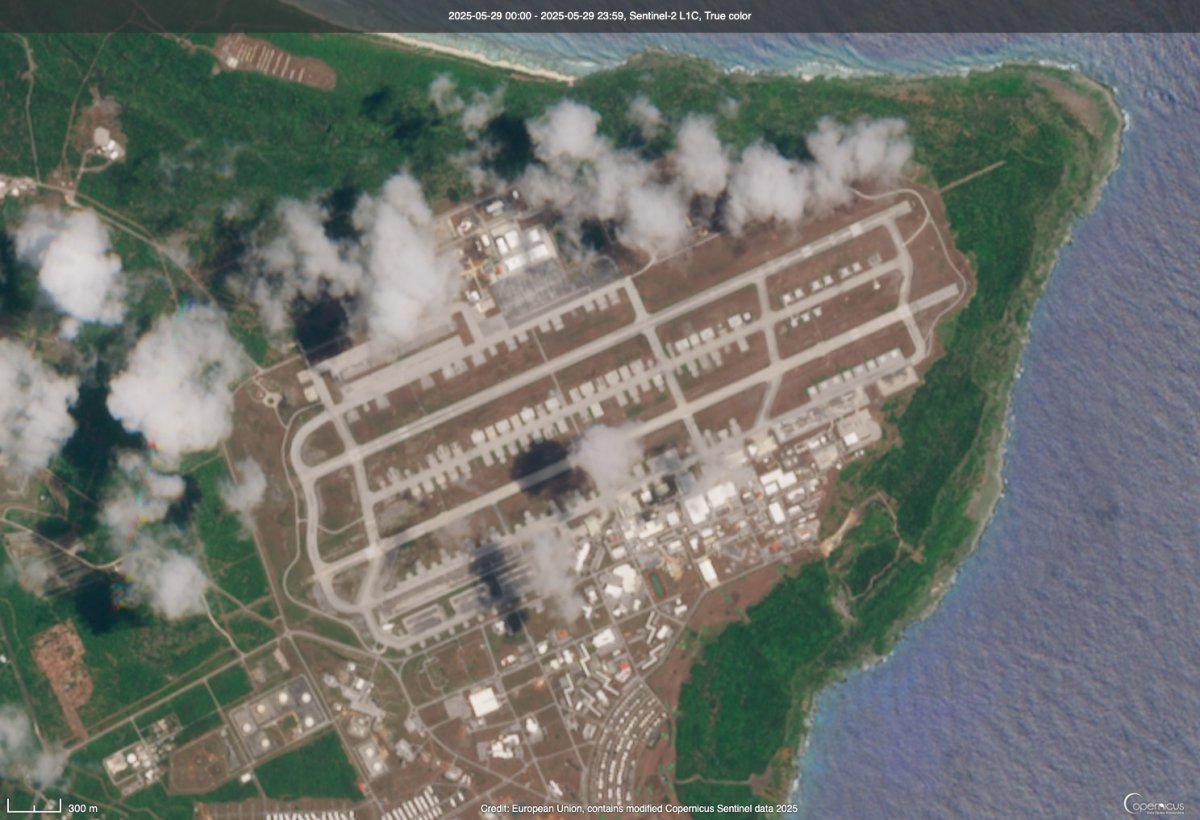-
Eagles DC Delivers Confident Message After Critical Losses - 12 mins ago
-
Gaza families mark Eid al-Adha amid destruction and loss - 30 mins ago
-
A. P. Kid wins 2025 Pennine Ridge Stakes - 34 mins ago
-
Chaos erupts at Paramount Home Depot as protesters confront ICE - 50 mins ago
-
Riley Gaines and Simone Biles Beef Online Amid Trans Athlete Debate - 51 mins ago
-
Rod Stewart, 80, cancels 6 concerts as he battles the flu - 60 mins ago
-
Diamondbacks vs. Reds Highlights | MLB on FOX - about 1 hour ago
-
Israeli forces in Gaza kill 6 Palestinians seeking aid, health officials say - about 1 hour ago
-
FanDuel Promo Code: Claim $500 Belmont Stakes No-Sweat Bet This Weekend - 2 hours ago
-
Sydney Sweeney and Jessica Simpson make fashion statements at events - 2 hours ago
Trump’s F-47 Could Become Sitting Ducks for China
U.S. aircraft, including the in-development F-47 stealth fighter, could be threatened by advanced Chinese weapons at U.S. bases in the Indo-Pacific, experts warn as Washington turns its gaze toward the region and possible Chinese designs on Taiwan.
F-47s at U.S. Air Force (USAF) bases in the Indo-Pacific will have to contend with China’s mid- and long-range missiles, said John Hemmings, the deputy director for geopolitics at the Council on Geostrategy in the U.K.
“Combine that with what some have seen as under-investment in active base defenses, and we see that USAF—like all services and allies—will have critical issues keeping their aircraft safe,” Hemmings told Newsweek.
There is a “growing cruise and ballistic missile threat” to USAF bases in the Pacific, prompting the U.S. military to take a long look at its air defenses around these facilities, the RAND think tank said in an analysis commissioned by the U.S. Pacific Air Forces and published on Tuesday.
Pool via AP
China is able to attack “all U.S. bases in the Indo-Pacific region,” and defenses around these bases have not kept up with the threats they could face, according to the think tank.
The USAF has looked at ways to make air bases in the region more protected, but “improvements to date have been limited, though the threat has advanced substantially,” the analysis said. More money has been spent on “active defenses,” such as missile systems, but “spending on passive defenses has significantly lagged behind,” it continued. Passive defenses can include camouflage and decoys.
The U.S. under President Donald Trump has made its intention to turn away from Europe toward the Indo-Pacific clear, sparking a flurry of commitments among European allies to raise defense spending and rely less on American personnel and U.S.-supplied kit.
“The U.S. is prioritizing deterring war with China in the Pacific,” U.S. Defense Secretary Pete Hegseth told European allies in Brussels in February, adding, “Together, we can establish a division of labor that maximizes our comparative advantages in Europe and Pacific respectively.”
Hegseth said on Saturday that Beijing was “preparing to potentially use military force to alter the balance of power in the Indo-Pacific” and was gearing up for the “real deal” of an invasion push on Taiwan.

Copernicus
Beijing considers Taiwan a breakaway part of mainland China that it intends to one day reunite under central control. But Taipei, which has established a democratic government, has long asserted its independence from Beijing and aligned itself with Western allies.
“The threat China poses is real, and it could be imminent,” Hegseth said during a speech at the Shangri-La Dialogue defense forum in Singapore. China’s Foreign Ministry denounced the speech as “filled with provocations and intended to sow division.”
“China deplores and firmly opposes them and has protested strongly to the U.S.,” Beijing added.

Copernicus
Trump announced in March that Boeing would be the main contractor for a new Air Force sixth-generation stealth jet, currently known as the F-47. “Nothing in the world comes even close to it,” Trump said at the time.
The U.S. Navy’s parallel program to get a sixth-generation jet in the air is known as F/A-XX. The Pentagon hopes to prioritize the F-47 development over the F/A-XX, believing going after two programs at once could slow both down, Bloomberg reported on Wednesday.
China is developing its own sixth-generation fighter, the J-36. Footage emerged late last year appearing to show a new Chinese stealth fighter flying over the southwestern Chinese city of Chengdu.
The future F-47, when deployed in the Indo-Pacific, will need fixed bases that would “be under mortal threat” from China’s long-range weapons, Tom Shugart, an adjunct senior fellow with the Center for a New American Security think tank, wrote on X, formerly Twitter, on Wednesday.
Militaries across the world will have to rethink how they protect their air bases and expensive aircraft after Ukraine pulled off an elaborate, coordinated drone attack on several Russian air bases on Sunday, analysts say.
Ukraine said it hit 41 of Russia’s aircraft, including at least one of its scarce A-50 airborne early warning and control aircraft and several long-range, nuclear-capable bombers.
One Ukrainian official said 13 aircraft had been destroyed, which could not be independently verified. Satellite imagery from the Siberian air base of Belaya and Olenya, an Arctic base in Murmansk—just two of the targeted bases—showed several destroyed Tu-95 and Tu-22 bombers.
Airfields and aircraft “will need to have their passive and active defenses upgraded to deal with this UAV [uncrewed aerial vehicle] threat,” said Frederik Mertens, a strategic analyst with the Dutch think tank TNO.
“If there ever was a clear call for action, this is it,” he told Newsweek. “The genie is out of the bottle.”
Hemmings added, “We are in a new era of asset vulnerability.”
Source link































